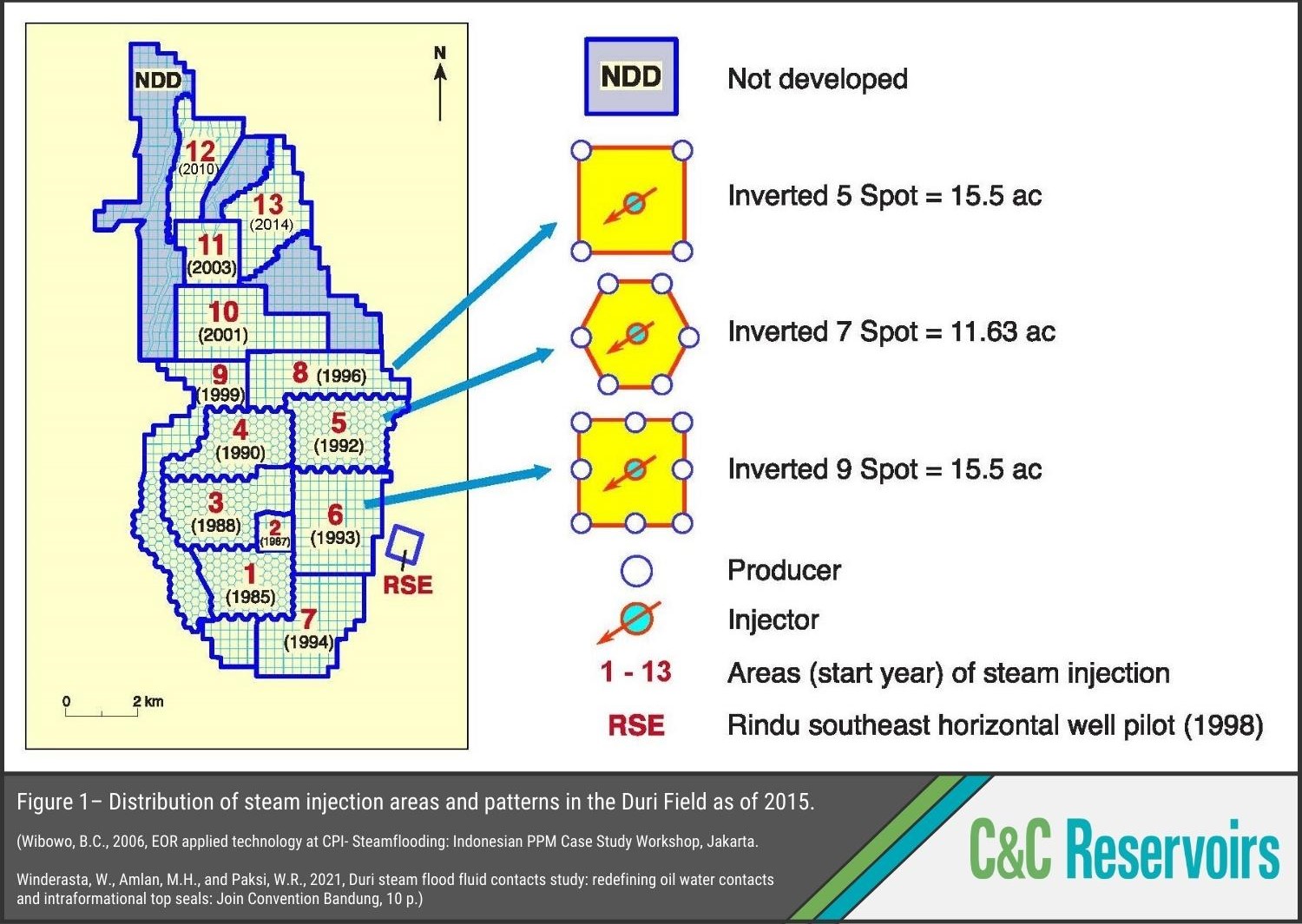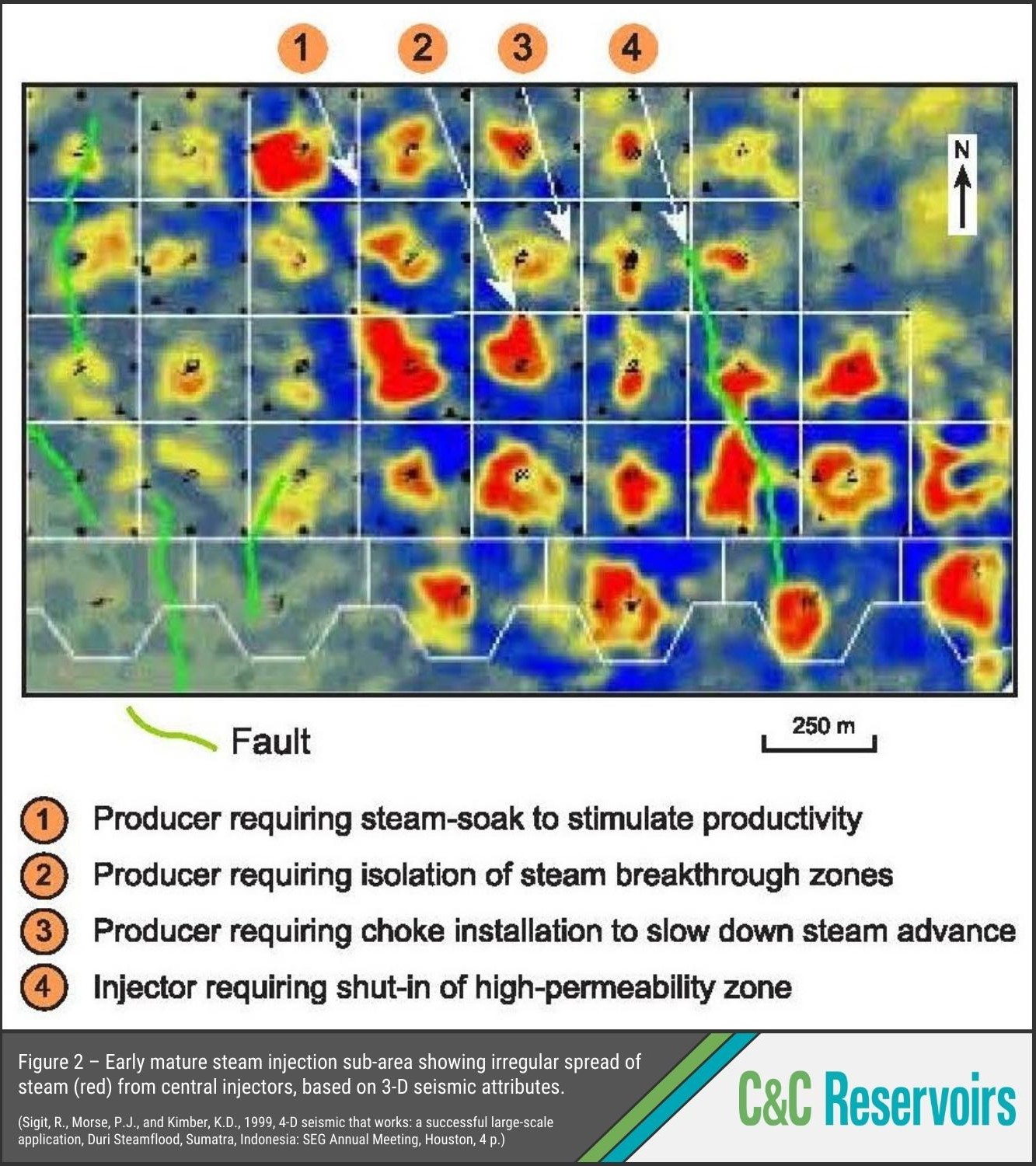The Duri Field
Analogue Spotlight
The Duri Field in Indonesia has been producing oil from the Middle Miocene Sihapas Group since 1958. The deltaic sandstone reservoirs are very porous (34% average) and permeable (1335 mD). However, primary recovery is impeded by the waxy oil’s high viscosity (150 cP) in the underpressured and low-temperature conditions at <770 ft TVDML.
Primary production rose to a peak of 64,100 BOPD in 1964 but had fallen to 44,000 BOPD by 1967 and was forecast to recover just 9% of STOIIP. Following various improved recovery pilots in the 1960s and ‘70s, steamflooding was implemented across the field from 1985. Injection began in the southern crestal Area 1 and progressed downflank and to deeper reservoirs. Each area was defined by net pay thickness, clay content, degree of stratification and other parameters, and was developed on an inverted 5-, 7- or 9-spot pattern accordingly (Fig. 1). Net pay was found to be the dominant control on steamflood performance. The process was considered uneconomic in <50 ft of net pay, whilst inverted 9-spot patterns allowed production to keep pace with injection in thick (>100 ft) sections.
High-permeability layers were responsible for irregular steam fronts and steam cycling between injectors and producers. To improve lateral and vertical conformance, such layers were routinely shut off. Nevertheless, their oil continued to be produced by gravity drainage. The high-temperature steam reduced oil viscosity by up to 95%, making gravity drainage more efficient. 4-D seismic has been used to: identify cold, untreated zones; target steamed yet bypassed oil; and optimise the injection pattern in low-permeability layers (Fig. 2).
Steamflooding was a resounding success. Production soared from 45,000 BOPD to 300,000 BOPD in the ten years following its implementation and incremental recovery is on track for a staggering 51% of STOIIP.
The Digital Analogue Knowledge System (DAKS™) contains many global oil and gas analogues specifically focused on heavy oil fields. Use these analogues to benchmark your own field, and delve into C&C Reservoirs Reservoir Evaluation Reports to discover best practices from top performing reservoirs that can be applied to your own assets.


